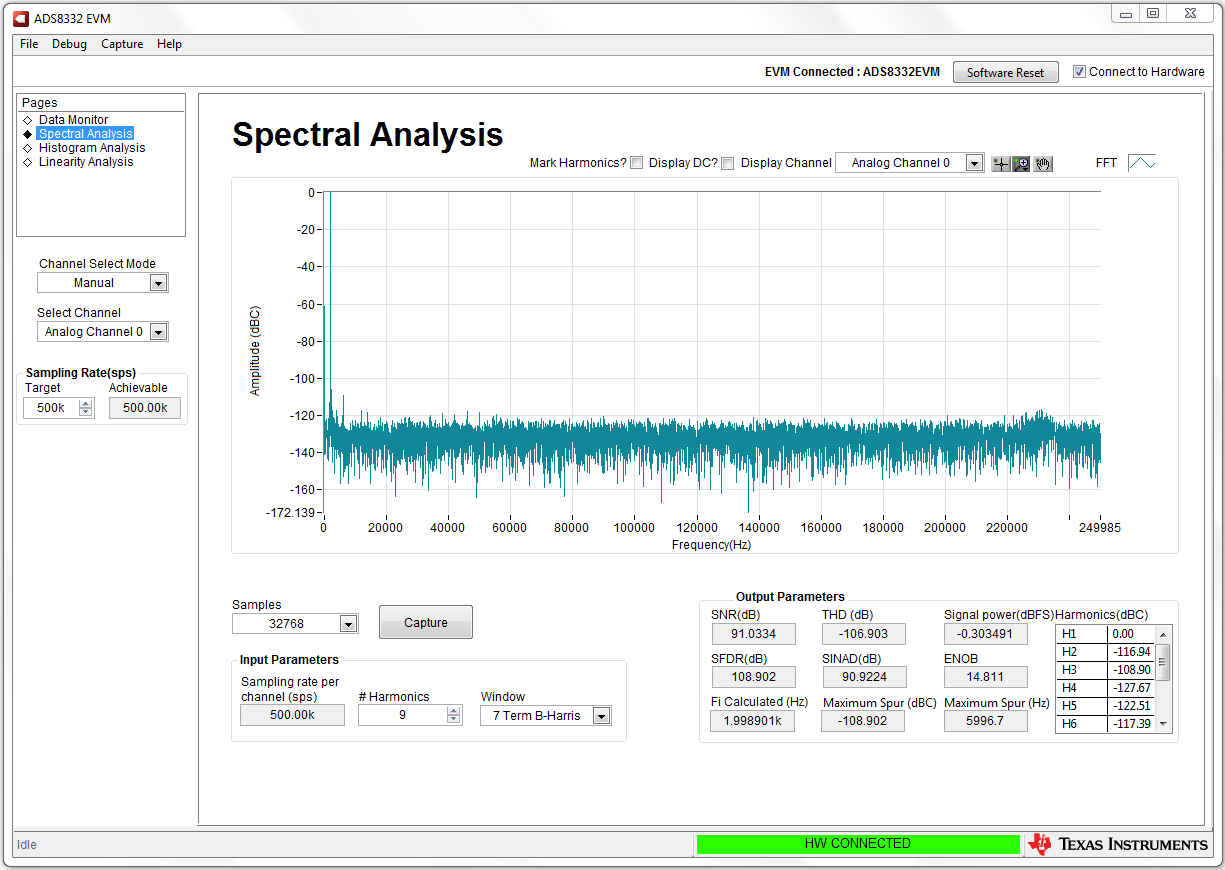SBAU251B July 2017 – February 2023 ADS8331 , ADS8332
6.3 Spectral Analysis Tool
The spectral analysis tool, shown in Figure 6-6, is intended to evaluate the dynamic performance (SNR, THD, SFDR, SINAD, and ENOB) of ADS8332 SAR ADC through single-tone sinusoidal signal FFT analysis using the 7-term Blackman-Harris window setting.
 Figure 6-6 Spectral Analysis Tool
Figure 6-6 Spectral Analysis ToolFor dynamic performance evaluation, the external single-ended source must have better specifications than the ADS8332 to make sure that the measured system performance is not limited by the performance of the signal source. Therefore, the external reference source must meet the source requirements mentioned in Table 6-1.
| Specification Description | Specification Value |
|---|---|
| Signal frequency | 2 kHz (OSR=0) |
| External source type | Single-ended |
| External source common-mode | 2.048 V |
| Maximum SNR | 100 dB |
| Maximum THD | –110 dB |
For 2-kHz SNR and ENOB evaluation at a maximum throughput of 500 kSPS, the optimal number of samples is 32768. More samples brings the noise floor so low that the external source phase noise can dominate the SNR and ENOB calculations.
Finally, the FFT tool includes windowing options that are required to mitigate the effects of noncoherent sampling (this discussion is beyond the scope of this document). The 7-Term Blackman Harris window is the default option and has sufficient dynamic range to resolve the frequency components of up to a 24-bit ADC. The None option corresponds to not using a window (or using a rectangular window) and is not recommended.